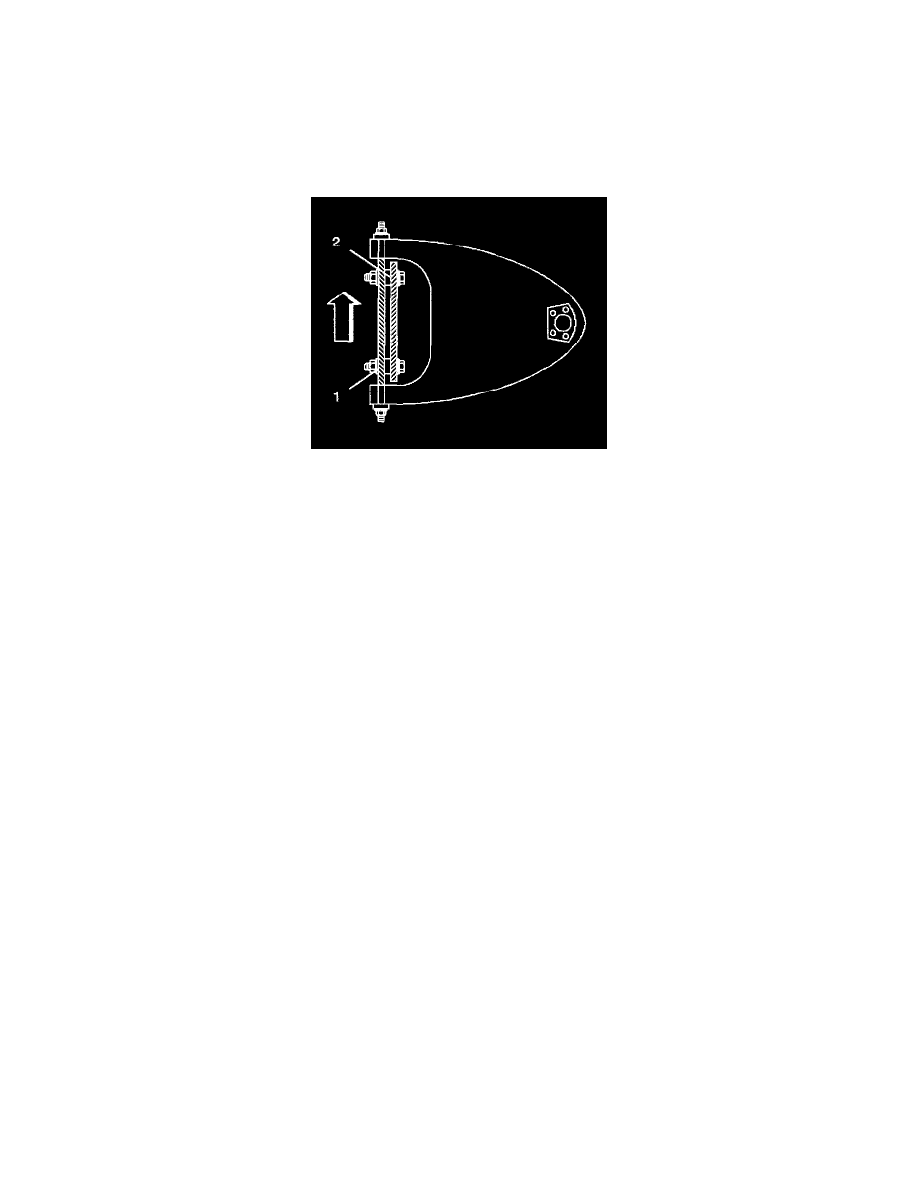Safari Van 2WD V6-4.3L VIN X (2003)

Alignment: Service and Repair
Front Wheel Alignment
Front Caster and Camber Adjustment
Front Caster and Camber Adjustment
The caster and the camber adjustments are made by inserting shims between the upper control arm shaft and the frame bracket. The shims may be
added, subtracted, or transferred in order to change the readings.
Important:
-
Before adjusting the caster and the camber angles, jounce the front bumper 3 times to allow the vehicle to return to the normal height.
-
Measure and adjust the caster and the camber with the vehicle at curb height. The front suspension Z dimension and the rear suspension D
dimension are indicated in Trim Heights.
-
When checking the left and the right side caster and camber, it must be equal within 1.0 degree.
-
When setting the left and the right side caster and camber, it must be equal within 0.50 degree.
-
The caster and the camber set is relative to the ground.
1. Loosen the upper control arm shaft to frame nuts (1).
Important:
-
A normal shim pack will leave at least 24/~ threads of the bolt exposed beyond the nut. The maximum shim pack cannot be thicker than 21.3 mm
(0.84 inch).
-
The difference between the front shim packs and the rear shim packs must not exceed 10 mm (0.40 inch). If these requirements cannot be met,
check for damaged control arms and damaged related parts.
2. If the caster is not within specifications, adjust the caster by transferring the front shims to the rear, or the rear shims to the front. The transfer of
the one shim from the rear bolt to the front bolt will decrease the positive caster.
3. If the camber is not within specification, adjust the camber by changing the shims at both the front and the rear of the shaft. Add or subtract the
shims (2) as required. Adding an equal number of shims at both the front and rear of the cross shaft will decrease positive camber.
Notice: Refer to Fastener Notice in Service Precautions.
4. Tighten the nut on the thinner shim pack first.
-
Tighten the nuts to 110 Nm (81 ft. lbs.).
Tightening the nut on the thinner shim pack first improves the shaft to frame clamping force and torque retention.
5. Check the toe-in after changing the caster or the camber.
Front Wheel Toe Adjustment
Front Toe Adjustment
The toe-in can be increased or decreased by changing the length of the tie rods. A threaded sleeve is provided for this purpose. When the tie rods are
mounted ahead of the steering knuckle, the tie rods must be modified as follows:
-
Decreased in length in order to increase the toe-in. Increased in length in order to decrease the toe-in.
Important:
-
When checking and setting the toe-in, the left and right side to be set separately and the steering wheel must be held straight ahead position within
4 - 6 degrees. Before adjusting the toe-in, jounce the front bumper 3 times to allow the vehicle to return to the normal height.
-
Adjust the toe-in with the vehicle at curb height. The front suspension Z dimension and the rear suspension D dimension are indicated in Trim
Heights.
-
For an accurate toe-in reading, do not push or pull on the tires during the alignment process.
